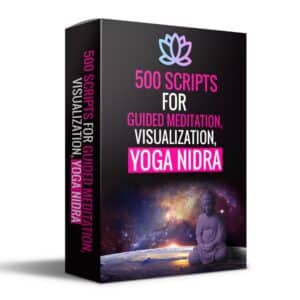Introduction to Mindfulness
Mindfulness is a way to be fully present in the moment, aware of where we are and what we’re doing, without being overly reactive or overwhelmed. It helps us tune into our senses, thoughts, and feelings without judgment.
Benefits of Mindfulness
For You (Unique)
- Reduces Stress: Practicing mindfulness can help you handle stress better, making you feel more relaxed.
- Improves Focus: Mindfulness aids in enhancing your concentration and attention to detail.
- Boosts Mood: It can uplift your mood, making you feel more positive and happy.
For Groups
- Enhances Communication: In a group, mindfulness encourages active listening and thoughtful responses.
- Builds Empathy: It helps group members understand each other’s feelings and perspectives.
- Promotes Cooperation: Mindful groups tend to work better together, solving problems and sharing tasks more effectively.
Mindfulness Exercises
Exercises for You
1. Mindful Breathing
- Find a quiet spot and sit comfortably.
- Focus on your breath. Notice how your chest rises and falls.
- If your mind wanders, gently bring your attention back to your breathing.
- Do this for 5-10 minutes each day.
2. Sensory Observation
- Choose an object around you.
- Use your senses to observe it — what does it look like, feel like, smell like?
- If your thoughts drift, refocus on your sensory experience.
Group Exercises
1. Mindful Listening
- In pairs or small groups, one person speaks while the others listen.
- Listeners focus fully on the speaker’s words, without planning responses.
- After the speaker finishes, listeners summarize what they heard to ensure understanding.
2. Gratitude Sharing
- In a group, take turns sharing something you’re grateful for.
- Listen attentively when others speak, without interrupting or judging.
- This exercise fosters positivity and a sense of community.
Tips for Incorporating Mindfulness into Your Daily Life
- Start Small: Begin with short, daily exercises and gradually increase the duration.
- Routine Matters: Try to practice mindfulness at the same time each day to build a habit.
- Be Patient: Mindfulness takes time to develop. Don’t get discouraged if it feels challenging at first.
- Use Reminders: Set reminders on your phone or place notes in visible spots to prompt mindfulness throughout the day.
Conclusion
Mindfulness is a powerful tool for enhancing well-being, both individually and in groups. By regularly practicing mindfulness exercises, you can improve your mental clarity, emotional balance, and interpersonal relationships. Remember, the key is consistency and patience. Embrace mindfulness as a journey rather than a destination.
Discover the transformative power of mindfulness with our carefully curated collection of printable mindfulness worksheets and exercises. Each worksheet is designed to guide you through exercises that cultivate awareness, reduce stress, and promote emotional well-being. From grounding techniques to breathing exercises, these tools are your allies in navigating the complexities of daily life with a sense of calm and presence. Whether you’re a beginner or looking to deepen your practice, these printable resources are tailored to meet your needs.
Save up to 88% with our Bundles
Instant Download
- Digital Download
- Digital file type(s): 1x PDF
- Your files will be available to download once payment is confirmed

![Printable Unique Mindfulness Worksheet & Exercises for Groups [PDF]](https://guidedmeditationscript.com/wp-content/uploads/2024/03/Printable-Unique-Mindfulness-Worksheet-Exercises-for-Groups-PDF.jpg)
![Printable Mindfulness Worksheet & Exercises for Embracing Uniqueness [PDF]](https://guidedmeditationscript.com/wp-content/uploads/2024/03/Printable-Mindfulness-Worksheet-Exercises-for-Embracing-Uniqueness-PDF-300x150.jpg)
![Printable Moving Mindfulness Worksheet & Exercises [PDF]](https://guidedmeditationscript.com/wp-content/uploads/2024/03/Printable-Moving-Mindfulness-Worksheet-Exercises-PDF-300x150.jpg)
![15,000 Positive Affirmations Bundle [PDF]](https://guidedmeditationscript.com/wp-content/uploads/2024/01/15000-Positive-Affirmations-Bundle-PDF-1-300x300.webp)

![150 Best Hypnosis Scripts [PDF] Bundle](https://guidedmeditationscript.com/wp-content/uploads/2023/11/150-Best-Hypnosis-Scripts-PDF-Bundle-300x300.jpg)

![200 Printable Mindfulness Exercises Worksheets Bundle [PDF]](https://guidedmeditationscript.com/wp-content/uploads/2024/02/200-Printable-Mindfulness-Exercises-Worksheets-Bundle-PDF-300x300.jpg)


![Printable Mindfulness Exercises & Worksheet for Elementary Students [PDF]](https://guidedmeditationscript.com/wp-content/uploads/2024/02/Printable-Mindfulness-Exercises-Worksheet-for-Elementary-Students-PDF-300x150.jpg)
![Printable Mindfulness Exercises & Worksheet for Overcoming Procrastination [PDF]](https://guidedmeditationscript.com/wp-content/uploads/2024/02/Printable-Mindfulness-Exercises-Worksheet-for-Overcoming-Procrastination-PDF-300x150.jpg)
![Printable Easy Mindfulness Exercises & Worksheet for Adults [PDF]](https://guidedmeditationscript.com/wp-content/uploads/2024/02/Printable-Easy-Mindfulness-Exercises-Worksheet-for-Adults-PDF-300x150.jpg)